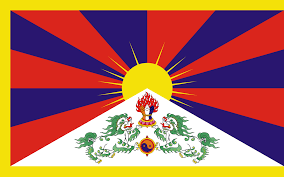Language/Tibetan/Grammar/Gender
Hi Tibetan learners! 😊
In this lesson, we will explore the concept of gender in the Tibetan language. Unlike many other languages, Tibetan language has no concept of grammatical gender. Instead, it has a system of classifying nouns into three categories based on meaning. This classification is referred to as the "Class System", which we will discuss further in this lesson.
After mastering this lesson, these related pages might interest you: How to Use Be & Pronouns.
The Class System[edit | edit source]
In Tibetan, there are three classes into which all nouns can be categorized: སྐར་པ་ (skar-pa), མིག་པ་ (mig-pa), and གནས་པ་ (gnes-pa). Each of these three categories has its own unique characteristics that are important for learners to understand.
སྐར་པ་ (skar-pa)[edit | edit source]
The Skar-pa category includes nouns that are animate, such as humans and animals. For instance, words like "person," "dog," "cat," and "cow" are all in the Skar-pa category. This category is marked by the prefix "གསུམ་" (gsum-) in the plural form.
མིག་པ་ (mig-pa)[edit | edit source]
The Mig-pa category, on the other hand, includes nouns that are inanimate, such as objects and abstract concepts. Words like "chair," "table," "book," and "happiness" are all in the Mig-pa category. In this category, the plural form is marked by the prefix "བཞི་" (bzhi-).
གནས་པ་ (gnes-pa)[edit | edit source]
The Gnes-pa category includes all pronouns and numerals. While nouns in the other two categories can be modified by certain adjectives, this category cannot. Additionally, this category does not take any plural markings.
Examples[edit | edit source]
Now that we have introduced the three categories of nouns, let's take a look at some examples:
| Tibetan | Pronunciation | English |
|---|---|---|
| བླ་མ་ | Lha-ma | Mother (Skar-pa) |
| ཐེག་པ་ | Thek-pa | Chair (Mig-pa) |
| ང་ཚོ་ལྟ་མིང་ | Nga-tsho lta-ming | My name (Gnes-pa) |
| ཡི་གེ་ན་གི་ཁ་རྒྱག་རེད་པར་བསམ་པ་ལྟ་བུའི་བཞུགས་སོ་སོའི་དམིགས་འཛིན་ག་རེད་པར་བསམ་པ་ཆེ་བ་སྟེ་ཅན་གྱི་གདམས་དབང་དང་གྱུར་པ་རྣམ་རྒྱལ་གྱི་རྩ་བ་ཆ་འབྲེལ་དུ་ཡི་གེ་ན་སྦྱིན་པ་དང་ཀན་གྱི་གཏམ་རྒྱལ་འདི་བས་མི་འགོད་པ་རྣམ་པ་དང་གཟུགས་པ་འདི་བས་མི་འགོད་པ་ཆེ་ཌུ་བཀྲ་ཤིས་བྱེད་པ་ཡོད། | Yige na gi khar- gyang-re par sam-pa-lata bu'i bzhug-so sor-ma seng-khe, ta-ming-zin-ga re-par sam-pa-chen-po yul-gye gi-tsam-gyal bee-pa nam-gyal-gyi tsa-wa-cha-drel-du yi-ge-na spyin-par dang kan-gyi tam-gyal ’di-bas-mi ’god-pa-nam-pa-dang zuk-su pa 'di-bas-mi ’god-pa-chen-po-che du yi-ge-na spyin-par cher-du be-tra-shis- byed-pa yod. | In this sentence, there are many examples of the Mig-pa and Skar-pa categories, as well as the Gnes-pa category for pronouns and numerals. |
As you may have noticed, some Tibetan words may have multiple translations into English. This is because Tibetan does not differentiate between masculine and feminine nouns the way many other languages do. Instead, Tibetan relies on the Class System to classify nouns according to their meaning.
Dialogue[edit | edit source]
Let's practice with a dialogue to see the Class System in action:
- Person 1: དགའ་དྲ་སྐུ་མཆུ་དྲ་བ་ཅི་ལྟེ་ཁ་གློག་པ་? (Daga-dra sku-chu-dra-ba ci lte-kha log-pa?) ("Do you know how to spell 'Daga-dra Sku-chu-dra-ba' in Tibetan?")
- Person 2: སྐར་པ་ལེན་པ་མི་འགྲོ་བདེན་གྱི་ཡིན། (Ska-rpa len-pa mi 'gro-bden-gyi yin.) ("It spells as Ska-rpa len-pa mi 'gro-bden.")
In this dialogue, we have a Skar-pa noun "སྐུ་མཆུ་དྲ་བ་" (sku-chu-dra-ba) which means a small insect.
Practice[edit | edit source]
Now that you have learned about the Class System in the Tibetan language, it's time to practice. Try to classify the following nouns into the correct categories:
1. བླ་མ་ (Lha-ma) ("mother") 2. ཁྱེད་ (Khyed) ("house") 3. ང་ (Nga) ("I") 4. གླང་ཆེན་ (Lang-chen) ("big Yak") 5. ཚ་ (Tsha) ("road") 6. ལམ་སྟོན་ (Lam-ston) ("path") 7. གོང་ཁོང་སོགས་པའི་རྩ་བ་ (Gong-khong sog-pa'i rtsa-ba) ("Root of a plant")
- Possible solution:
1. Skar-pa (animate) 2. Mig-pa (inanimate) 3. Gnes-pa (pronoun) 4. Skar-pa (animate) 5. Mig-pa (inanimate) 6. Mig-pa (inanimate) 7. Mig-pa (inanimate)
By practicing with more classification and by using the nouns in sentences, you will understand and recognize better the three categories of Tibetan nouns.
Conclusion[edit | edit source]
In conclusion, unlike many other languages that differentiate gender between masculine and feminine nouns, Tibetan language has a unique Class System that categorizes nouns based on their meaning, whether they are animate or inanimate, or they are pronouns and numerals. We hope you have enjoyed learning about the Class System in the Tibetan language.
➡ If you have any questions, please ask them in the comments section below.
➡ Feel free to edit this wiki page if you think it can be improved. 😎
Sources[edit | edit source]
- Modern Lhasa Tibetan grammar - Wikipedia
- Tibetan Grammar: The Application of Gender Signs Clarified
- Tibetan Grammar: The Application of Gender Signs Clarified ...
Other Lessons[edit | edit source]
- How to Use Have
- Questions
- How to Use Be
- Adjectives
- Give your Opinion
- Pronouns
- Conditional Mood
- Plurals

